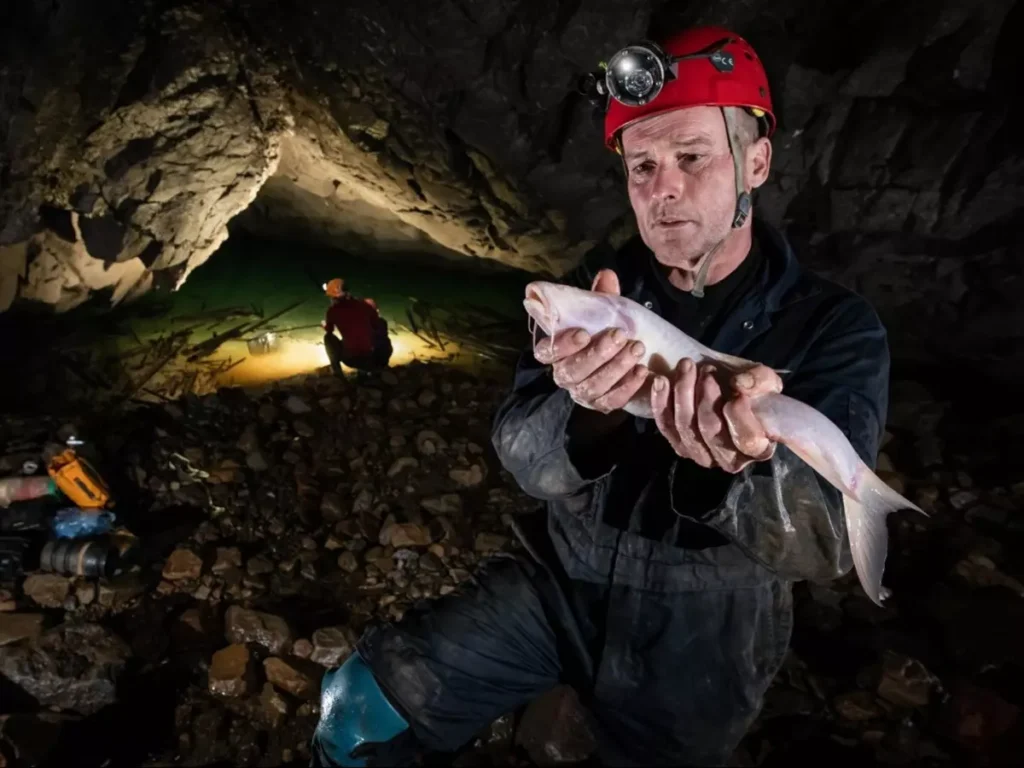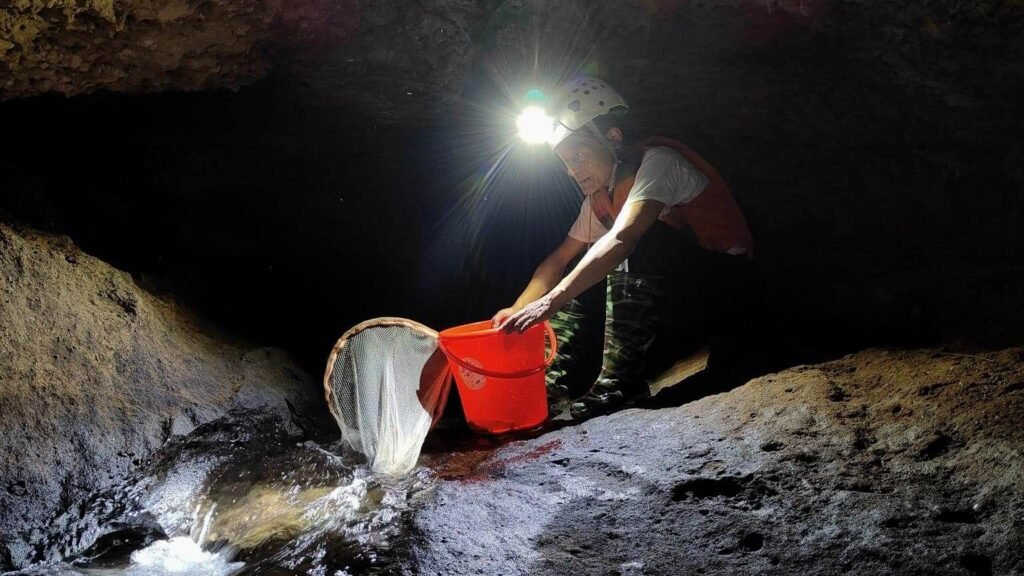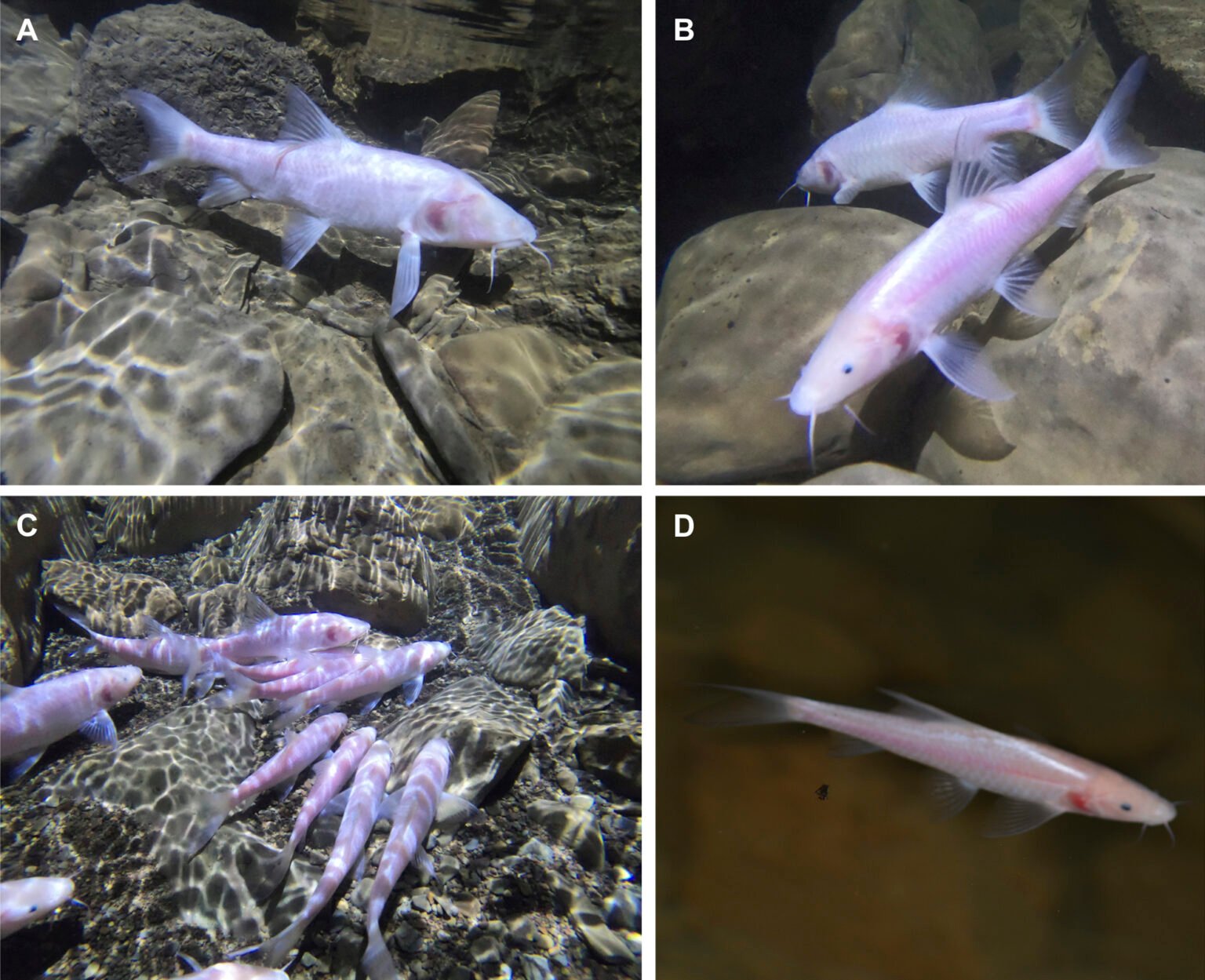Blind Cave Fish Meghalaya: Exploring Meghalaya’s Hidden Aquatic Wonders
Deep within the dense forests of north-eastern India lies Meghalaya, a state renowned not only for its breathtaking landscapes but also for its vast, intricate networks of limestone and sandstone caves. These caves are home to some of the most unusual aquatic creatures on Earth — the blind cave fish Meghalaya is famous for. These unique species have evolved in complete darkness, developing astonishing adaptations to survive without sight. This blog explores the fascinating world of blind cave fish Meghalaya and highlights the groundbreaking discoveries that are reshaping our understanding of evolution and conservation.
The Discovery of Blind Cave Fish Meghalaya That Changed Science
Two years ago, zoologist Khlur Baiaineh Mukhim made a breakthrough while exploring a remote cave stream in Meghalaya. What caught his eye was a yellowish-green fish with long barbels around its mouth — a feature common to some fish species but unique among cave dwellers. Even more surprising was that this fish had eyes, a rarity in the underground world where creatures usually lose their vision over generations due to perpetual darkness.

This fish was later identified as a new species, named Schistura densiclava. Unlike other cave fish, Schistura densiclava can survive both in subterranean pools and the surface streams nearby — a dual adaptation unheard of in Meghalaya’s cave ecosystems.
Meghalaya’s Cave Ecosystems: Natural Habitat of Blind Cave Fish Meghalaya
The caves of Meghalaya are among the most complex in the world. Housing between 1,500 and 1,700 known caves, many remain unexplored due to their remote locations and difficult terrain. These underground networks provide an extreme environment with low temperatures, limited oxygen, and total darkness — conditions that force aquatic life to evolve extraordinary survival strategies.
Professor Dandadhar Sarma, a leading zoologist on this research, explains that the caves’ harsh conditions, with temperatures dropping as low as 18°C and oxygen levels near critical lows, make the survival of tropical fish like Schistura densiclava remarkable. The fish must balance life in these subterranean habitats while also adapting to surface water environments that are vastly different.
Evolution in Darkness: Adaptations of Cave Fish
Blind cave fish are extraordinary examples of evolution. Over generations, these fish lose their eyesight and pigmentation — two energy-consuming traits unnecessary in the dark. Instead, they develop heightened senses of taste, smell, and touch, using sensory organs along their skin to detect vibrations and navigate their environment.

The fish feed on scarce resources such as organic debris washed in by floods, tiny marine organisms, and even bat droppings. Despite such a hostile environment, some cave fish live up to a decade and reproduce successfully. Interestingly, their offspring are born with eyes but gradually lose them as they mature, linking them to their surface-dwelling ancestors.
The Ongoing Quest: Exploring Meghalaya’s Underground
Exploring Meghalaya’s caves is no simple feat. Researchers like Mukhim rappel hundreds of meters into deep shafts, squeeze through narrow tunnels, and wade through cold, dark pools. Their headlamps provide the only light as they patiently wait, sometimes for hours, to catch glimpses of elusive fish species.
The 2019 discovery of Neolissochilus pnar, the world’s largest cave fish, inside a deep pond in Krem Umladaw cave showcased the richness of Meghalaya’s aquatic life. These expeditions highlight how little is still known about these ecosystems and the urgent need to study and protect them.
Why Conservation Matters
The fragile cave ecosystems face threats from human activity, pollution, and habitat disturbance. Once a species disappears, it cannot be restored. Conservationists urge immediate action to protect these natural wonders.

Zoologist Mukhim emphasizes, “It’s painful to realize that such a fascinating ecosystem in our own backyard has been so little studied.” The hope is that increased awareness and research funding will lead to better protection for Meghalaya’s blind cave fish and the unique environments they inhabit.
A Call to Protect Meghalaya’s Underwater Marvels
The blind cave fish of Meghalaya offer a window into the power of evolution and the resilience of life in extreme conditions. Their remarkable adaptations and rare dual habitat make them invaluable to science. But time is running short. Protecting Meghalaya’s caves and their hidden aquatic inhabitants is essential not only for preserving biodiversity but also for unlocking mysteries about life’s adaptability on Earth.




